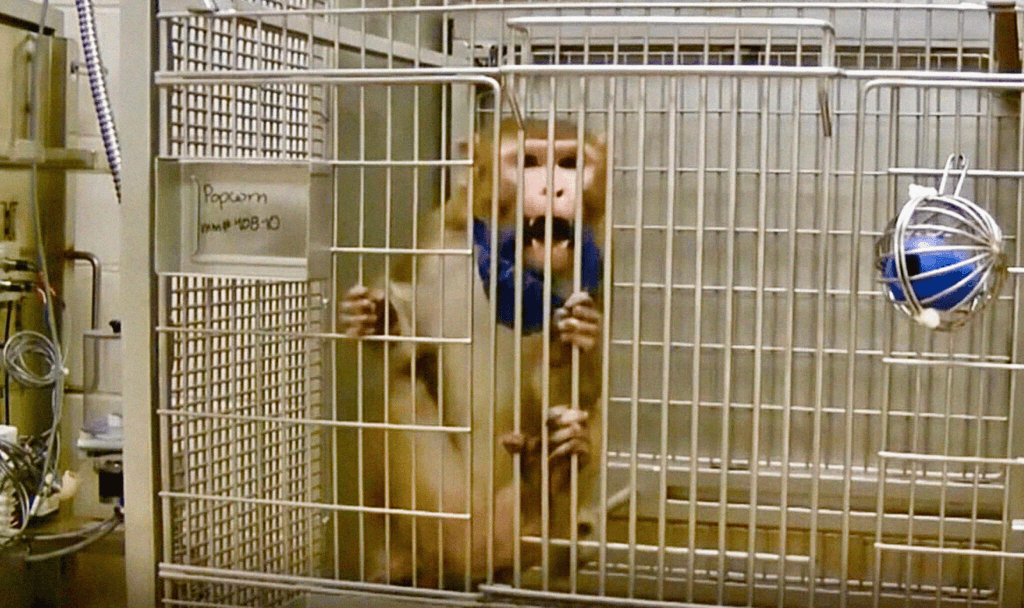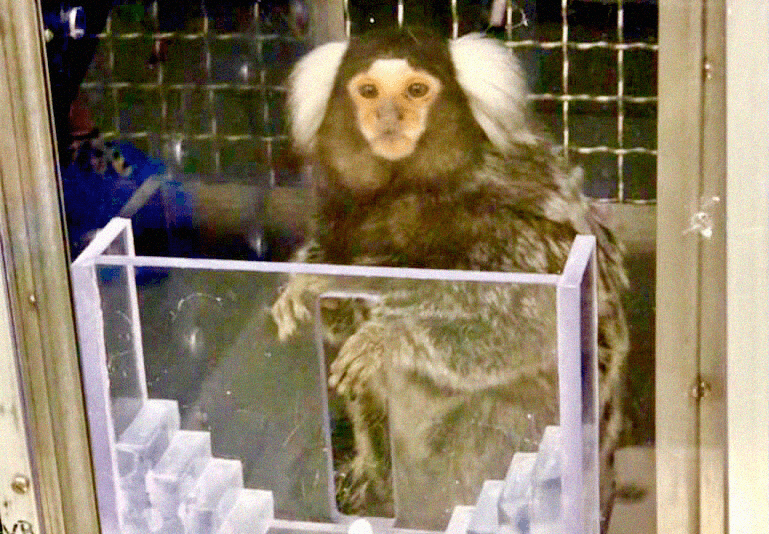Experiments
All of the experiments in Abduction were inspired by real-life experiments on animals.
At the Washington National Primate Research Center, more than 1,200 monkeys are confined to barren steel cages and bleak, windowless rooms. Baby monkeys are torn away from their screaming mothers, others self-mutilate by clawing at their own bodies or ripping out their own hair due to mental distress, and monkeys are forced to breed. They all live in constant misery. Documents obtained by PETA reveal that in one recent eight-month period, the federally funded center—including its breeding facility in Arizona—had to treat a staggering 332 traumatic injuries (such as broken limbs and teeth), more than 200 cases of gastrointestinal problems, 149 cases of significant weight loss, 19 cases of rectal prolapse, and a dozen implant abnormalities.

At the California National Primate Research Center at the University of California–Davis, experimenters strapped masks onto monkeys’ heads in order to force them to inhale toxic substances. Macaques are kept thirsty in order to compel them to comply with experimenters in exchange for a few drops of water or juice.

University of Massachusetts–Amherst’s Agnès Lacreuse mutilates marmosets in worthless “menopause” experiments—even though these gentle monkeys don’t experience menopause. Led by Lacreuse, experimenters implant electrodes in holes that they drill into the animals’ skulls, cut into their necks, and thread electrode leads from the scalp and neck through the abdomen. The marmosets are routinely zip-tied into a restraining device, shoved into a plastic cylinder, and subjected to the noise of an MRI machine.

Louisiana State University’s Christine Lattin trapped and killed 123 birds in a 13-month period ending in June 2020. That’s an average of about two birds a week, every week, for more than a year. It appears that some of the birds she trapped were so stressed by their abduction and sudden imprisonment—a condition described as “failure to thrive”—that they simply died or were killed within a week. Lattin’s previous experiments included feeding crude oil to sparrows and testing their fear of unfamiliar objects by withholding food from them for 15 hours and then putting random objects near their food dishes in order to see how readily the birds would approach.